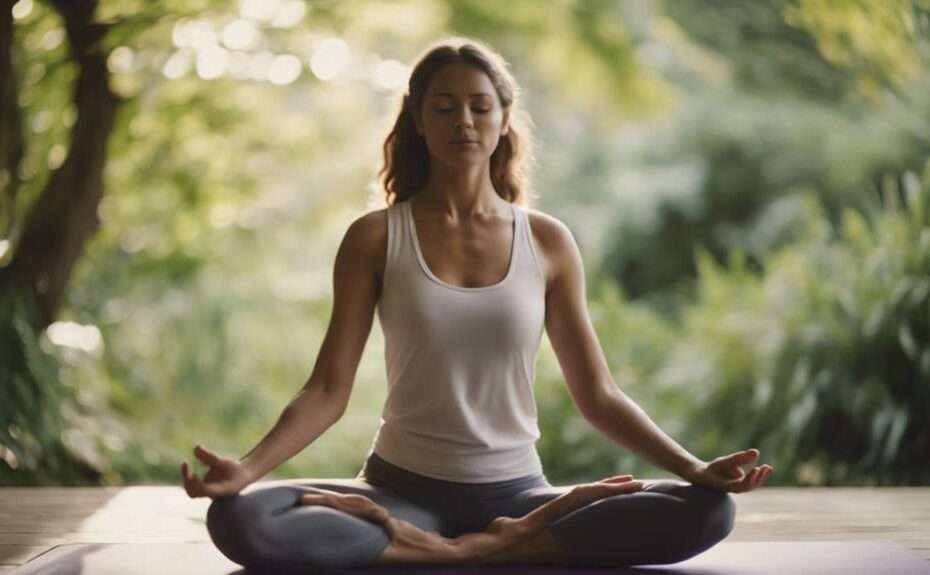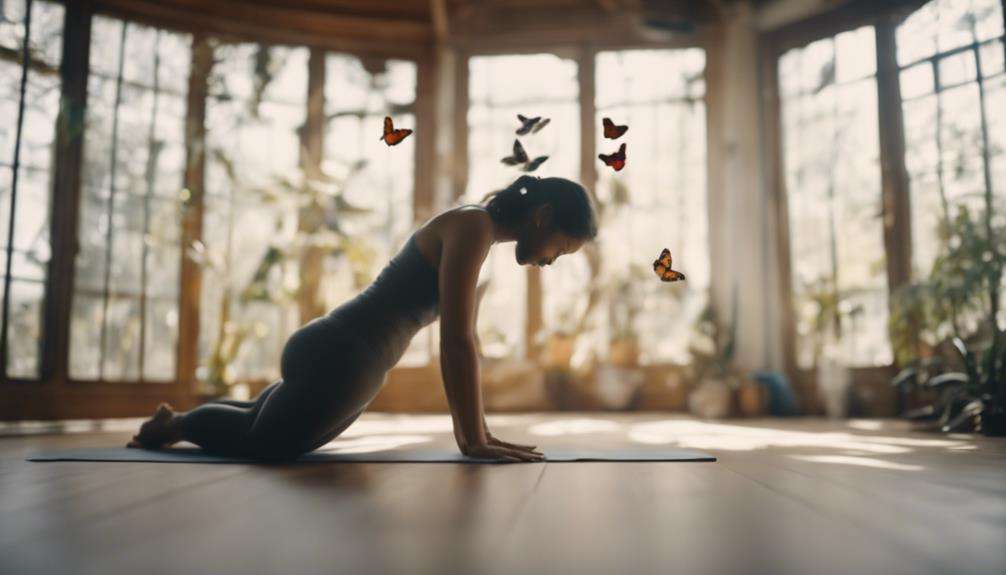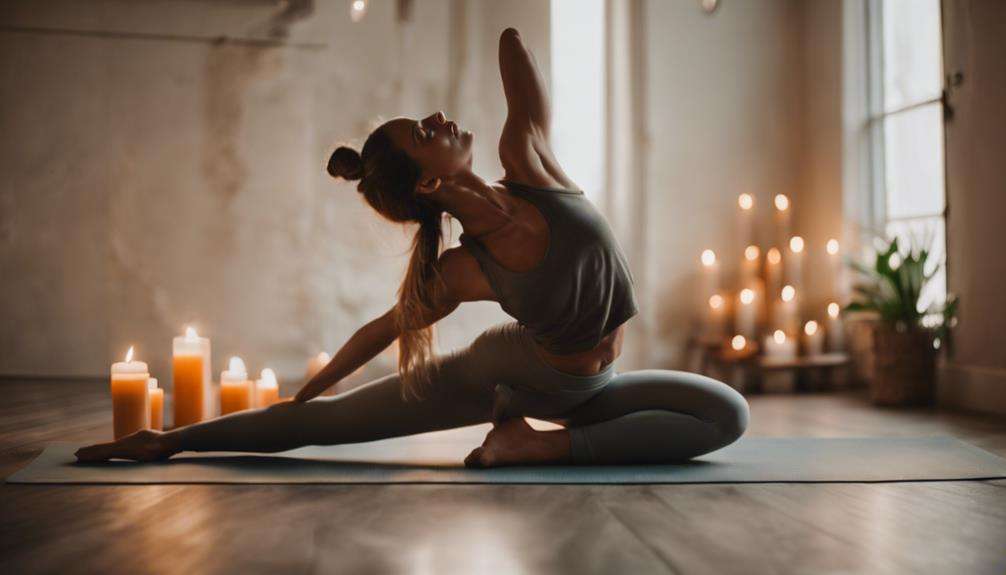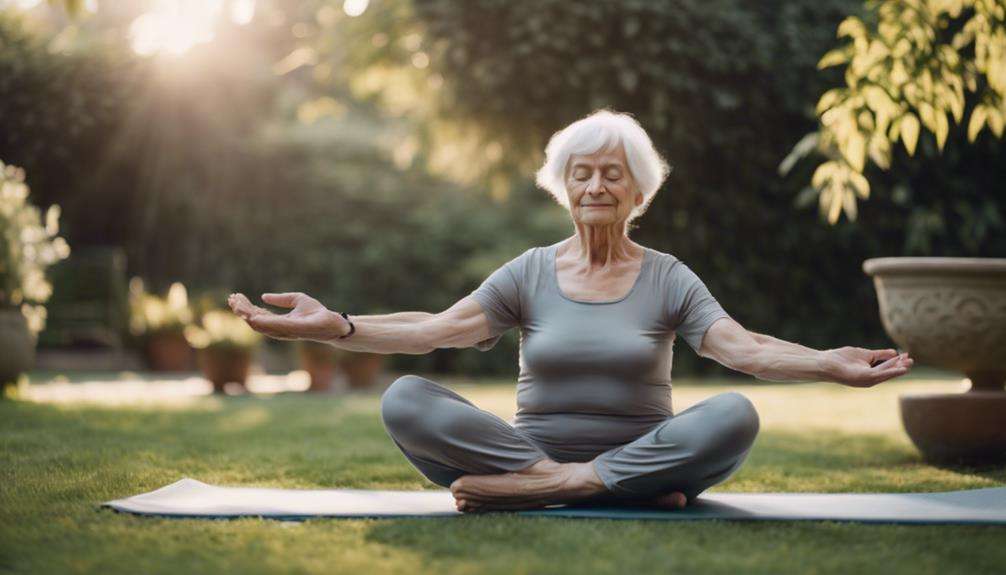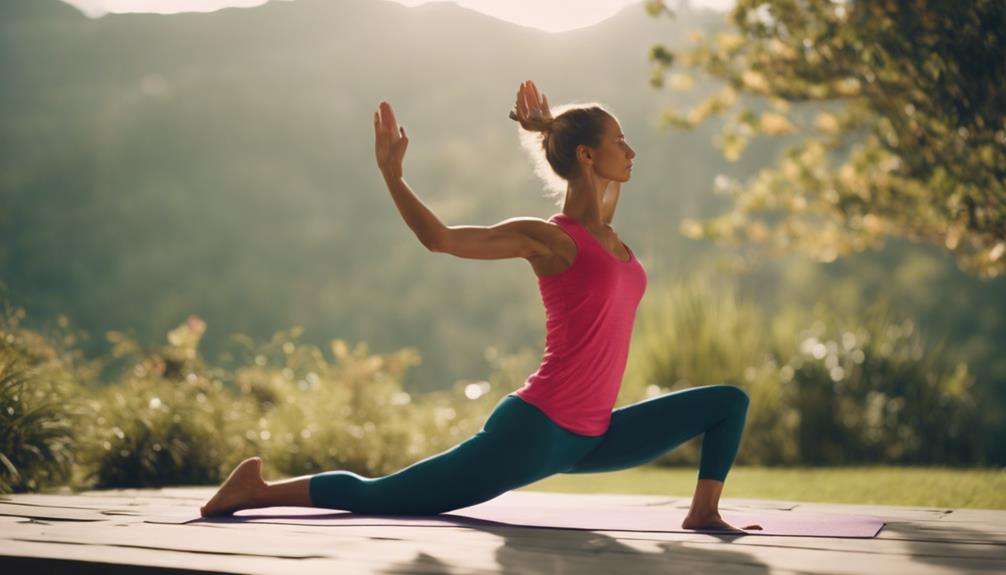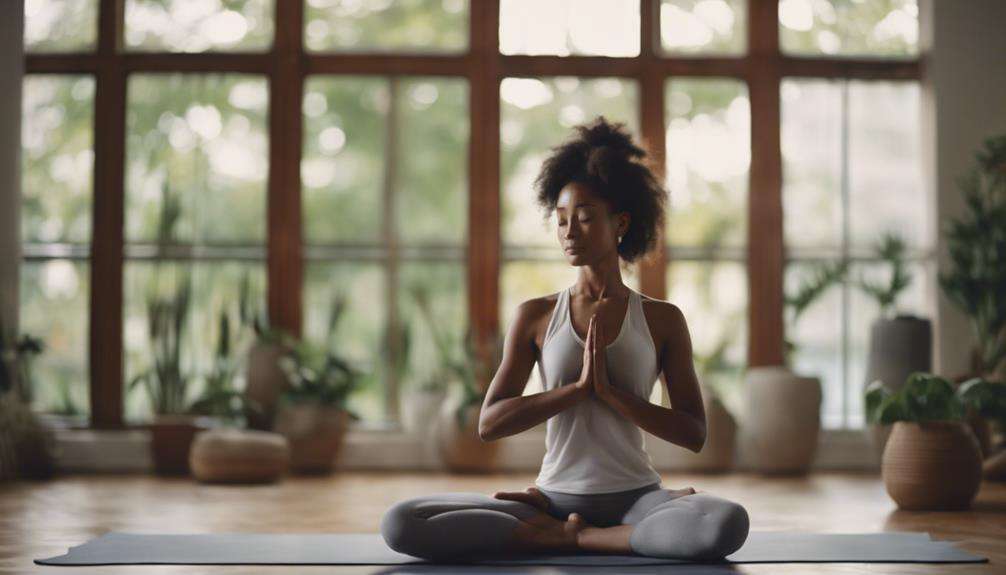Imagine a serene lake, its surface calm and undisturbed, reflecting the beauty of the surrounding landscape. Just as the lake finds tranquility through stillness, you too can cultivate a peaceful mind and a flexible body through dedicated practice.
This journey towards inner harmony and physical agility begins with simple yet powerful techniques that harmonize your mind and body. Discover how the ancient wisdom of meditation and yoga can transform your well-being, allowing you to navigate life's challenges with grace and ease.
Key Takeaways
- Enhance flexibility through yoga for a peaceful mind and agile body.
- Cultivate inner peace with meditation practices for holistic well-being.
- Strengthen mind-body connection for improved flexibility and mental clarity.
- Incorporate yoga into daily routine for balance, flexibility, and inner calmness.
Benefits of Yoga for Flexibility
Enhance your body's flexibility and overall well-being through the transformative practice of yoga. Yoga plays a remarkable role in increasing flexibility by stretching and lengthening muscles, which in turn improves the range of motion in your joints.
By regularly practicing yoga, you can effectively reduce muscle stiffness and tension, leading to a more supple and flexible body. Different yoga poses target various muscle groups, aiding in enhancing flexibility throughout your entire body. This newfound flexibility not only allows for better posture and alignment but also enables ease of movement in your daily activities.
Moreover, the improved flexibility from yoga serves as a preventive measure against injuries during physical activities and daily movements. It provides your body with the resilience and mobility needed to navigate through tasks with greater ease and reduced strain. Embrace the benefits of yoga for flexibility and witness the positive impact it can have on your overall well-being.
Yoga Poses for Increased Flexibility
Experience the transformative power of yoga poses designed to increase your flexibility and enhance your physical well-being. By incorporating specific yoga poses into your practice, you can target different areas of your body to improve flexibility and strength.
Here are five yoga poses that can help you achieve increased flexibility:
- Downward Facing Dog: Stretches the spine, shoulders, and hamstrings, enhancing overall flexibility.
- Pigeon Pose: Opens up the hips and pelvic area, promoting flexibility and relieving tension.
- Warrior II: Targets the legs and hips, improving strength and flexibility simultaneously.
- Seated Forward Bend: Enhances flexibility in the hamstrings and lower back, promoting better posture.
- Tree Pose: Improves balance and flexibility, grounding you in the present moment.
Meditation Practices for Inner Peace
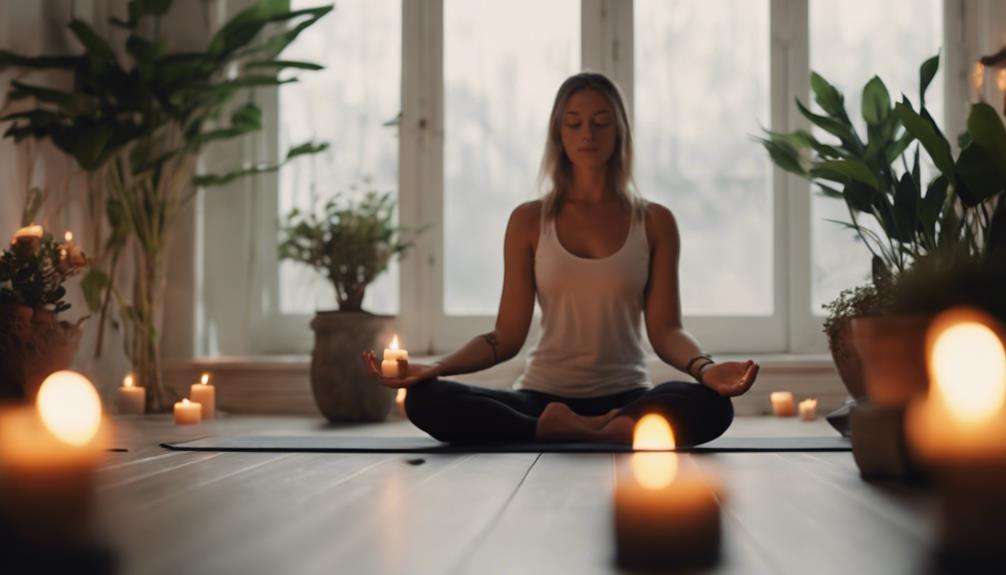
Discover the profound serenity and harmony that meditation practices can cultivate within your inner being. Meditation is a powerful tool for achieving inner peace and emotional well-being. By engaging in meditation techniques like focused attention, relaxed breathing, and mindfulness, you can calm the mind and enter a peaceful state of mind.
Whether you choose guided meditation, mantra meditation, or mindfulness meditation, the key is to create a quiet environment where you can center your thoughts and emotions.
Regular practice of meditation not only helps in reducing stress but also restores balance and mental clarity. Unlike some activities, meditation requires no special equipment and can be done anywhere, making it a versatile practice that fits seamlessly into your daily routine.
Embrace the tranquility that meditation offers, and witness the positive impact it can have on your overall well-being. Start your journey towards inner peace today through the simple yet profound practice of meditation.
Mind-Body Connection in Yoga
Embark on a journey that explores the profound connection between your mind and body through the practice of yoga. Yoga is a holistic approach to health that focuses on integrating the physical, mental, and emotional aspects of your being. Through this ancient practice, you can experience a deep sense of unity within yourself.
Here are some key points highlighting the mind-body connection in yoga:
- Yoga emphasizes the interconnectedness of the mind and body, promoting holistic well-being.
- Practicing yoga enhances mental clarity, emotional self-awareness, and cognitive function.
- Yoga postures, breathing techniques, and meditation work together to strengthen the mind-body connection.
- Yoga improves balance, flexibility, and inner calmness through mindful movements.
- Incorporating yoga into daily life supports stress reduction, improved flexibility, and overall peace of mind.
Tips for Flexibility and Wellness
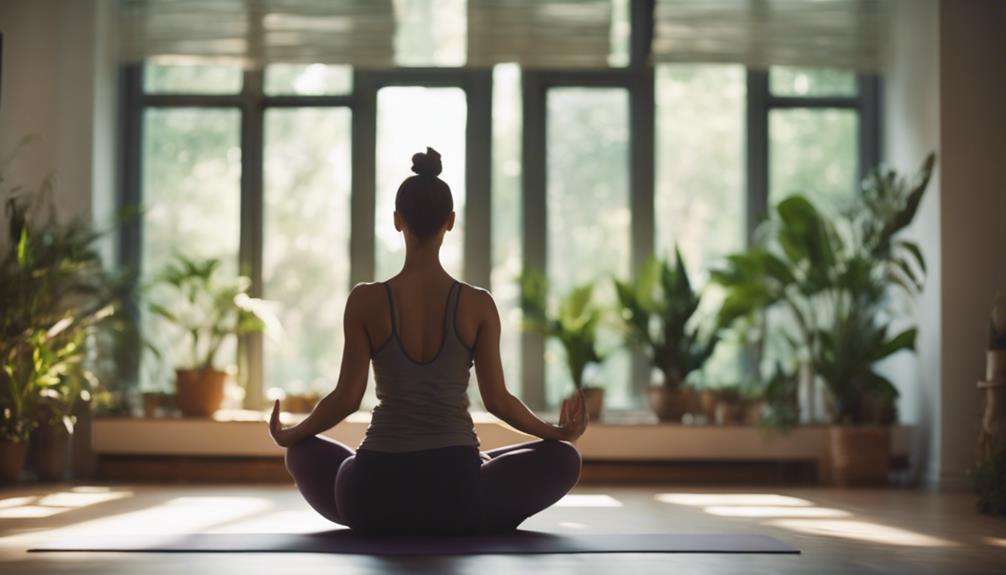
To improve your flexibility and overall wellness, consider incorporating yoga into your daily routine. Yoga isn't just about physical health but also mental well-being. By focusing on key areas such as the neck, back, hamstrings, shoulders, and hips, you can enhance functional flexibility, which is essential for daily movements and activities. Maintaining flexibility isn't only beneficial for graceful aging but also plays a crucial role in preventing injuries.
When setting flexibility goals, it's important to be individualized and catered to your body's unique needs and capabilities. Embrace flexibility as a vital component of your overall well-being. Through regular yoga practice, you can achieve a balance between physical health and mental clarity. Cultivating flexibility not only improves your body's range of motion but also contributes to a sense of inner peace and harmony. Start your journey towards improved flexibility and wellness today by incorporating yoga into your daily life.
Frequently Asked Questions
How Do You Practice Mindful Movement?
To practice mindful movement, focus on breath awareness, gentle movements, and body awareness. Incorporate mindful stretching, flowing sequences, and slow transitions in activities like yoga. Enhance your mind-body connection through meditation poses and grounding techniques for presence practice.
How Yoga Calms the Mind and Body?
To calm your mind and body through yoga, focus on breath control, body awareness, and relaxation techniques. By reducing stress, enhancing the mind-body connection, and practicing meditation, you can achieve emotional balance, physical flexibility, mental clarity, and inner peace.
What Is the Primary Purpose of Practicing Mindfulness?
In practicing mindfulness, your primary goal is to cultivate present-moment awareness and nonjudgmental acceptance. By engaging in mindful breathing and body awareness, you can find inner peace, mental clarity, and emotional balance.
How Can I Be More Peaceful and Mindful?
To be more peaceful and mindful, practice meditation techniques, breathing exercises, and mindfulness practices. Use stress relief methods, relaxation techniques, and self-care routines. Ground yourself with grounding exercises, balance emotions, and connect mind and body for presence and awareness.
Conclusion
As you continue to practice meditation, yoga, and mindfulness, you'll find that your mind becomes more peaceful and your body more flexible.
The coincidence of inner peace and physical flexibility is no accident – it's a harmonious balance that brings about a sense of calm and well-being.
Embrace these practices with an open heart and mind, and watch as your journey towards a healthier and more balanced lifestyle unfolds before you.
